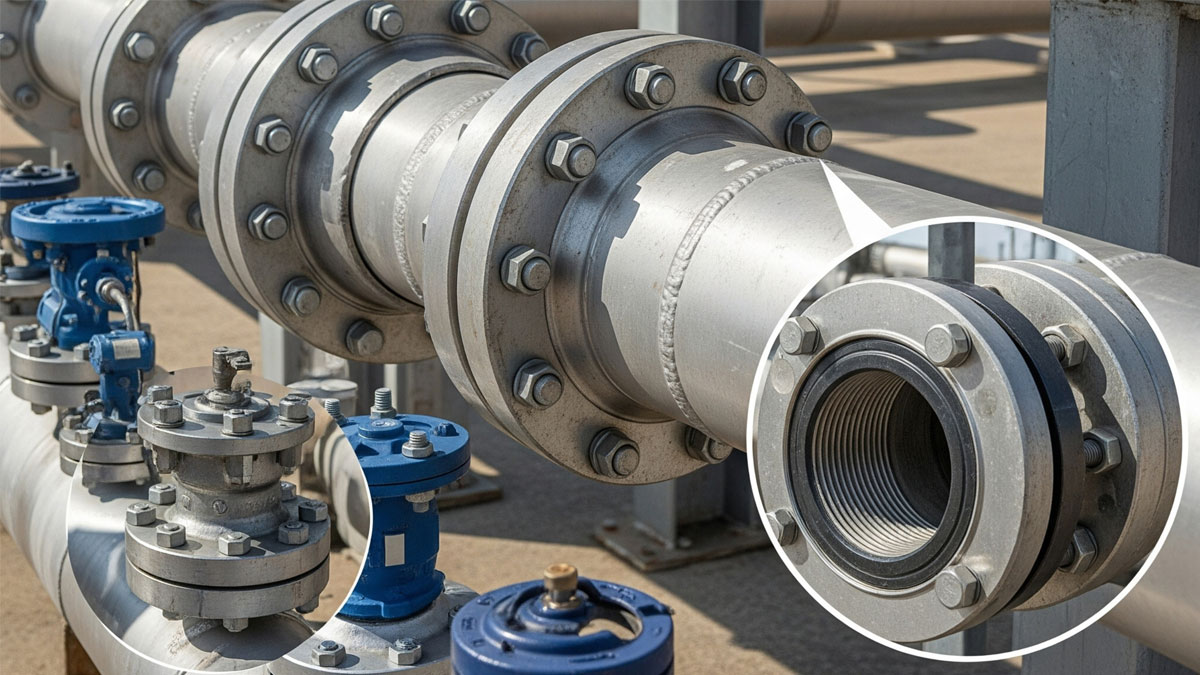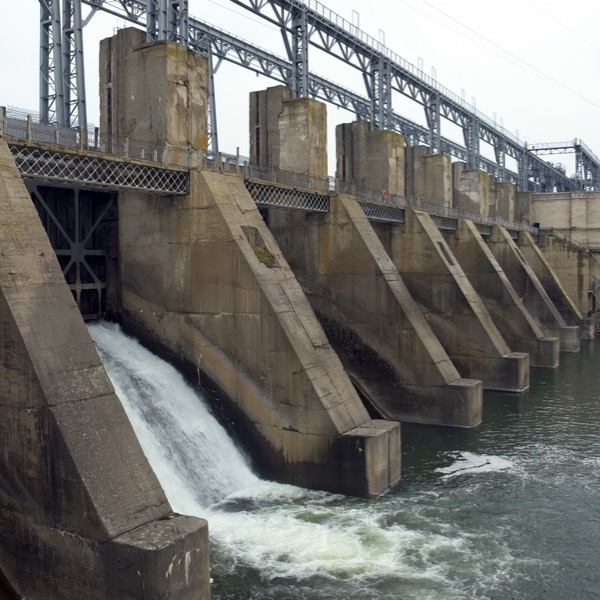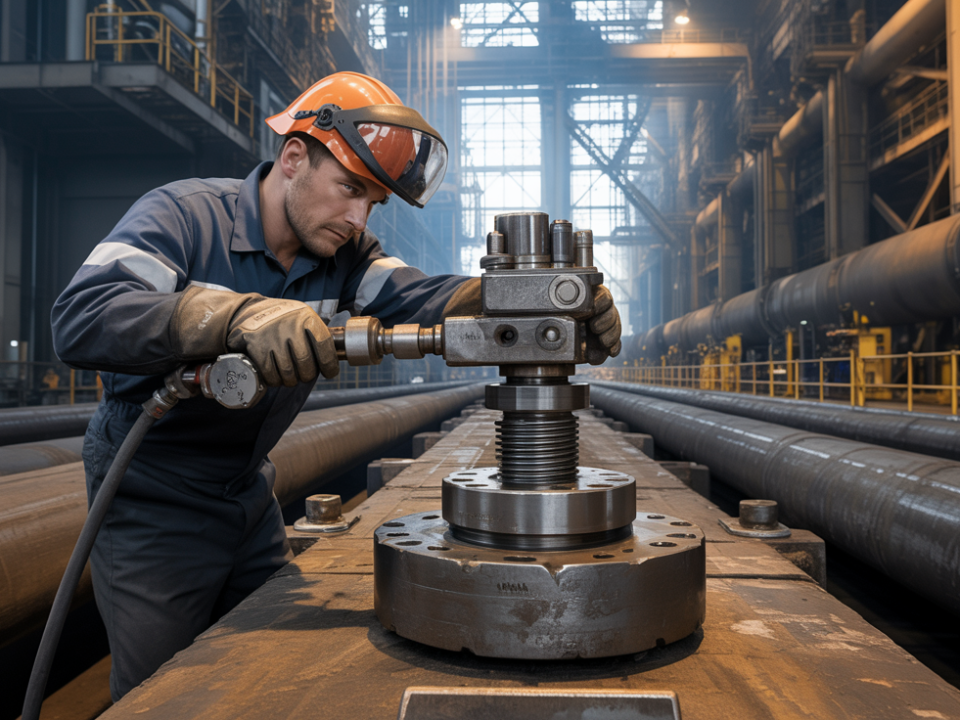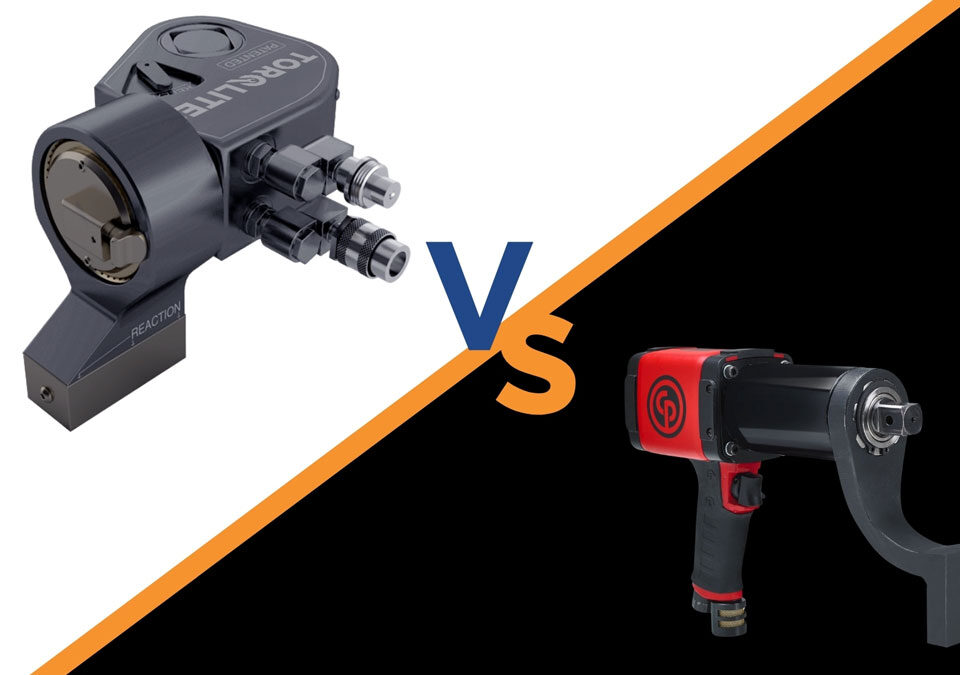
Hydraulic Torque Wrenches Play Critical Role in Industrial Joint Integrity
September 2, 2025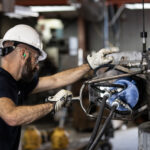
Why Proper Torque Application Matters: 5 Costly Mistakes You Can Avoid
October 1, 2025Flanges are integral to oil and gas projects, ensuring a secure, leak‐free connection in pipelines, pressure vessels, and other critical equipment. Alloy steel is widely used in machine components due to its strength, yield, and resistance to thermal expansion. Depending on the application, a fillet weld or bolted joint may be used when joining metal parts. A torque wrench ensures proper clamping force on bolts, especially when assembling a pump or connecting a weld neck flange.
Nominal pipe size determines the orifice plate dimensions for fluid flow measurement. Materials like cast iron, brass, and nickel alloys each offer unique properties, such as ductility or resistance to friction. Chromium is often added to alloy steel for high-stress applications to improve durability. Precision in dimension and diameter is critical during forging or fitting components like tongue-and-groove joints.
Wrenches of various types are essential tools during assembly, ensuring accurate fits. Thermal expansion must be accounted for in both static and dynamic systems to maintain structural integrity across temperature changes. This article presents seven essential areas—from identifying flange types to optimizing maintenance practices—that every engineer and project manager should understand for efficient and safe operations.
1. Identify Various Types of Flanges in Oil and Gas Applications – Essential Selection Criteria
Identifying the range of flanges in oil and gas applications is the first step toward ensuring a leak-free, efficient bolted joint. Oil and gas projects use ASTM, ANSI, and ASME standard flanges—including weld neck, slip-on, and blind flanges—designed to operate under varying pressures and corrosive environments. For example, a weld neck flange is favored when high stress and elevated temperature demands are present due to its smooth load transfer and resistance to fatigue. In a 2021 study published by the American Society of Mechanical Engineers (ASME), proper flange selection reduced leak incidences by 27% in high-pressure pipelines. Engineers now rely on specific identification methods, including pressure ratings, face type (raised, flat, or tongue and groove), and material compatibility to meet project requirements.
Choosing the right flange type supports optimal force transmission and prevents issues such as micro-leaks that can lead to catastrophic failures in pressure vessels. Materials such as carbon steel, stainless steel, and duplex alloys are selected based on factors like corrosion resistance, yield strength, and cost. This initial classification guides subsequent bolting and gasket material decisions to ensure a secure connection.
The following table illustrates common flange types along with their key attributes and recommended applications:
| Flange Type | Key Characteristics | Recommended Use | ASME Standard |
| Weld Neck | High-stress, tapered design, robust in high-temperature environments | High-pressure process pipelines | ASME B16.5 |
| Slip-On | Easy to align, low cost, less stress concentration | Low-pressure applications | ASME B16.5 |
| Blind | Solid, used for sealing ends | Pipelines and vessels requiring isolation | ASME B16.5 |
| Threaded | No welding is required, and it is simple to install | Small-bore piping systems | ASME B16.5 |
This table underlines how standardization and correct selection can impact system integrity.
2. Analyze Material Choices for Oil and Gas Flanges – Durability and Compatibility Focus
Material selection is at the core of flange performance. Flange components are often manufactured from carbon steel, stainless steel, and exotic alloys such as Inconel or duplex stainless steel, each offering distinct advantages regarding corrosion resistance, yield strength, and operating temperature thresholds. For instance, carbon steel flanges are cost-efficient and suitable for moderate environments, while stainless steel offers superior resistance to corrosion in sour service conditions. In petroleum applications, where hydrogen sulfide can lead to embrittlement, duplex alloys are preferred because they reduce the hazard of hydrogen-induced cracking.
A 2020 research study by the Association of Materials Protection and Performance demonstrated that using stainless-steel flanges in high-corrosion areas improved service life by over 35% compared to carbon steel. Additionally, careful material analysis helps engineers avoid common issues such as material mismatch and resulting galvanic corrosion. Advanced methods such as finite element analysis (FEA) simulate operating conditions to further guide material selection, ensuring that the flange meets the yield and deformation standards required for high-pressure petroleum pipelines.
Based on these comparative insights, materials are assessed through laboratory tests on corrosion resistance, tensile strength, and fatigue performance. Tables comparing key mechanical properties from reputable sources solidify the decision-making process.
| Material | Tensile Strength (MPa) | Corrosion Resistance | Applications |
| Carbon Steel | 450–600 | Moderate | General-purpose pipelines |
| Stainless Steel | 500–850 | High | Sour service, high-temperature systems |
| Duplex Stainless Steel | 700–1000 | Very high | Offshore platforms, corrosive environments |
| Inconel | 800–1100 | Extreme | High-temperature, aggressive chemical processing |
This comparison table presents the advantages and trade-offs among materials, helping decision-makers tailor the flange selection to specific field conditions.
3. Understand Bolting Techniques for Flanges in Operations – Secure Connection Protocols
Bolting techniques ensure flanges maintain a leak-free seal in oil and gas installations. Proper torque application and bolt-tightening sequences distribute stress evenly and help avoid bolt fatigue and flange distortion. Engineers use calibrated torque wrenches and follow specific tightening patterns (typically star or diagonal sequences) to ensure uniform gasket compression. A field report by a major offshore operator in 2019 noted that strict adherence to bolting specifications reduced joint failures by 22% over five years.
Advanced techniques such as tension control bolting and hydraulic bolt tensioners have been adopted to maintain consistent preload in bolted joints. This ensures that the clamping force remains within defined limits even under thermal cycling and dynamic load conditions. In addition, the integration of torque-to-yield bolts further enhances connection reliability, albeit at a higher cost, by ensuring that bolts are stretched beyond the elastic limit in a controlled manner, securing the joint against vibration and pressure spikes.
Combining these precise bolting techniques with the appropriate flange design and material minimizes the risks of gasket failure and fluid leakage, which is essential for maintaining system integrity in high-pressure environments.
4. Evaluate Flange Testing and Inspection Procedures – Quality Assurance Standards
Flange testing and inspection procedures are critical for confirming that connections meet rigorous operational standards. Non-destructive testing methods (NDT), such as ultrasonic testing, radiography, and magnetic particle inspection, detect internal flaws, corrosion, and micro-cracks that are not visible to the naked eye. For example, ultrasonic testing can identify defects as small as 0.5 mm with a 95% detection rate when calibrated correctly. According to a 2018 National Association of Corrosion Engineers (NACE) report, meticulous inspection protocols reduced failure incidences by 18% in petrochemical facilities.
Regularly scheduled inspections, leak detection systems, on-site pressure tests, and leak detection systems ensure that flange couplings maintain structural integrity throughout their service life. Comprehensive documentation and adherence to the highest industry standards further affirm that all flanges are inspected under conditions replicating actual operating pressures and temperatures. This systematic approach to quality control minimizes unplanned downtime and mitigates safety risks inherent to oil and gas processing.
5. Recognize Applications of Flanges in Oil and Gas Industries – Operational Efficiency Drivers
Flanges are utilized extensively in oil and gas projects, and recognizing their varied applications is fundamental to ensuring operational efficiency. They are used in process piping systems, pressure vessels, heat exchangers, and storage tanks, where they secure the transmission of fluids under high pressures and temperatures.
In offshore drilling platforms, for instance, flanges mitigate the risks of leakage of oil or gas mixtures by maintaining robust bolted joints in corrosive environments. A 2020 survey conducted by PetroTech International revealed that 74% of operators prioritized flange quality and correct application, as it directly correlates with reduced maintenance costs and minimized environmental risks.
Different flame designs cater to specific operational conditions: slip-on flanges are employed in low-pressure pipelines, while weld neck flanges are standard in high-stress, high-temperature zones. This functional differentiation is pivotal in designing systems that optimize flow, pressure containment, and overall performance. By aligning the flange application with the operational demands of the oil and gas facility, engineers dramatically reduce the incidence of costly repairs and environmental hazards.
6. Summarize Safety Considerations for Flanges in Projects – Risk Mitigation Strategies
Safety considerations govern all flange design and usage aspects, ensuring that connections withstand operational loads, unexpected pressure surges, and environmental challenges. Proper flange assembly minimizes leakage, reduces the risk of fire or explosion, and protects personnel by maintaining a robust seal even during system transients. Industry guidelines mandate regular safety audits, bolt re-torquing schedules, and adherence to ASME Boiler and Pressure Vessel Code standards.
For instance, utilizing high-performance gaskets combined with advanced bolting techniques has reduced emergency shutdowns by 15% in facilities with strict safety protocols. In addition, safety factors such as accounting for potential flange deformation, thermal expansion, and fatigue stress are evaluated using predictive maintenance models and real-time monitoring systems, such as smart sensors integrated into critical joints. These measures ensure regulatory compliance and significantly prolong the equipment’s service life while protecting human life and the environment.
7. Optimize Maintenance Practices for Flange Systems – Longevity and Reliability Enhancement
Optimizing maintenance practices is the final critical consideration in managing flange systems in oil and gas projects. Regular inspection, cleaning, re-torquing, and component replacement based on predictive maintenance schedules are essential to prevent fatigue, corrosion, and leakage. For instance, implementing condition monitoring systems using vibration analysis and thermal imaging in a 2019 case study resulted in a 20% increase in flange life expectancy. Routine maintenance safeguards against unexpected failures and maximizes the return on investment by reducing unplanned downtime and repair costs.
Maintenance protocols guided by engineering best practices—such as those recommended by the American Society of Mechanical Engineers (ASME)—provide detailed procedures for bolt tensioning, gasket replacement, and corrosion management. By strictly following these standardized procedures, companies ensure that the bolted joints remain secure under operating conditions ranging from moderate to extreme pressures. This proactive approach to upkeep is critical for maintaining operational continuity, prolonging equipment lifespan, and ensuring that the integrity of oil and gas systems is never compromised.
Final Thoughts
An overview of flanges commonly used in oil and gas projects reveals the complexity and necessity of selecting the correct type for each specific application. Every aspect—from material selection to bolting techniques and safety inspections—is crucial to operational success. Research-backed practices improve reliability, enhance safety, and reduce maintenance costs. Adopting these best practices is essential for long-term operational efficiency in the oil and gas industry.
FAQS
Q: How do you calculate the torque of a flange?
A: To calculate flange bolt torque, use the formula:
T = K × D × F,
T is torque, K is the nut factor (typically 0.18), D is bolt diameter, and F is preload force. For specifics, refer to ASME or manufacturer data.
Q: What happens when you over-torque a flange?
A: Over-torquing can deform gaskets, overstress bolts, or warp the flange face. This can lead to leaks, equipment damage, or joint failure. Always use a calibrated torque wrench and follow recommended values to ensure safe and reliable sealing.
Q: What is a torque flange?
A: A torque flange is a specialized component that measures torque transmitted through a rotating shaft. It’s commonly used in test setups and machinery to monitor torque output accurately, improving performance analysis and system diagnostics.
Q: What is the proper torque sequence for a flange?
A: The proper sequence is a crisscross (star) pattern. This ensures even gasket compression and reduces warping. Typically, torque is applied in multiple passes: 30%, 60%, and 100% of the final value, followed by a final circular pass to confirm tightness.
Q: What are the types of flanges?
A: Common flange types include weld neck, slip-on, socket weld, lap joint, threaded, and blind flanges. Each serves different applications based on pressure, temperature, and assembly needs. Selection depends on piping system requirements and material compatibility.
Q: What is a pipe flange?
A: A pipe flange is a mechanical connection that joins pipes, valves, or equipment in a piping system. It provides strength, allows easy disassembly, and helps seal systems using bolts, gaskets, and precise alignment.

















